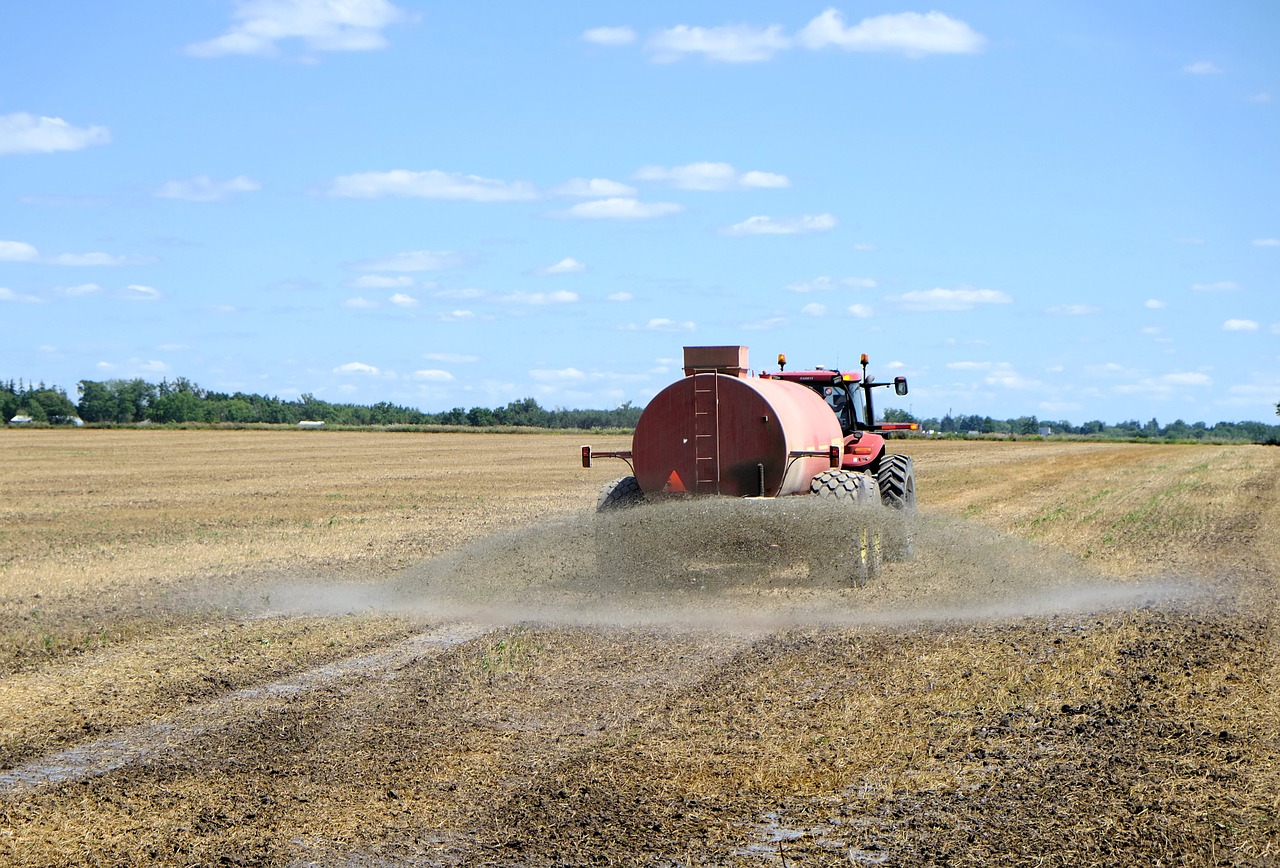Fertilizer is a material of natural or synthetic origin applied to soils to supply more plant nutrients essential to plant growth. Conservative estimates report that 30% to 50% of crop yields are attributed to natural or synthetic commercial fertilizer.
Generally speaking, fertilizers enhance the growth of plants. This goal is met in two broad ways; the traditional one being additives that provide nutrients. The second mode by which some fertilizers act is to enhance the effectiveness of the soil by modifying its water retention and aeration.
Crop yields vary greatly from one nation to another; developed nations generally have much higher crop yields than developing nations. Many factors are responsible for this disparity; one of the principle factors is fertilizers.
A vast quantity of fertilizer arable land, currently being used to grow food for the world, is unfertilized and therefore much less productive than it could be. A number of fertilizer studies have shown that simply adding a basic Nitrogen–Phosphorous–Potassium (N-P-K) fertilizer to a formerly-unfertilized field would more than double the yields.
In the developed world, using fertilizer is the norm; in the developing world, however, much of the agricultural land does not use fertilizer at all. Sometimes, the farmer applies a technique of leaving the land fallow for a time. Another approach is to use manure as a natural fertilizer. However, manure is not nearly as effective as N-P-K fertilizer.
All nitrogen fertilizers are made from ammonia (NH3), produced by the Haber-Bosch process(1). In this energy-intensive process, natural gas (CH4) supplies the hydrogen and the nitrogen (N2) is derived from the air. This ammonia is used as a feedstock for all other nitrogen fertilizers, such as anhydrous ammonium nitrate (NH4NO3) and urea CO(NH2)2.
All phosphates are obtained by extraction from minerals containing the anion PO4. In rare cases, fields are treated with the crushed mineral, but most often more soluble salts are produced by chemical treatment of phosphate minerals. The most popular phosphate-containing minerals are referred to collectively as phosphate rock. The main minerals are fluorapatite Ca5(PO4)3F (CFA) and hydroxyapatite Ca5(PO4)3OH. These minerals are converted to water-soluble phosphate salts by treatment with sulfuric or phosphoric acids.
As for potassium fertilizers, they are made of Potash which is a mixture of potassium mineral compounds. Potash is soluble in water, so the main effort in producing this nutrient from the ore involves some purification steps, for example, to remove sodium chloride (NaCl), common salt. Sometimes Potash is referred to as K2O, as a matter of convenience to those describing the potassium content; in fact, Potash fertilizers are usually potassium chloride, potassium sulfate, potassium carbonate, or potassium nitrate.
In contrast with chemical fertilizers, organic fertilizers are fertilizers derived from animal matter or vegetable matter, such as compost and manure; as opposed to the majority of chemical fertilizers which are extracted from minerals, such as phosphate rock or produced industrially, like ammonia. Organic fertilizers include naturally occurring organic matter as animal wastes from meat processing, peat, manure, slurry, and guano.

Image source.
The impact of fertilizers industry on environment has always been a subject of argument. The issue is that we tend to use too much fertilizer in the soil because they have to cater to the global demand of food. As mentioned, a huge ratio of the total yield production is out of synthetic or inorganic fertilizers, which contain components such as nitrogen and potassium. These chemicals and minerals, although help in boosting the growth of plants; they also have their drastic side effects in the long run.
The environmental effect varies according to the chemical components of the fertilizer, the method and rate of application, and the frequency of usage. Basically, the problems faced revolve around depletion the quality of the soil, altering the biology of water bodies, generally affecting human health, and other impacts related to environmental equilibrium and climate change.
Yet, we cannot deny artificial commercial fertilizer to the developing world merely out of a concern for the environment. Organic food production may result in healthier food and lower impact on the environment, but the needs of the hungry outweigh those values.
We cannot suddenly decide to stop using chemical fertilizers due to their environmental impacts. What we can do is to work on developing more organic fertilizers with higher quality and lower price that can compete with chemical fertilizers to help us shape alternative scenarios for the future of fertilizers industry.
Glossary
- The Haber–Bosch process is the industrial implementation of the reaction of nitrogen and hydrogen to produce ammonia; it was invented by German Chemist Fritz Haber.
References
hungermath.wordpress.com
sustainablebabysteps.com
environment.nationalgeographic.com
Cover image by jcomp Image by jcomp on Freepik.